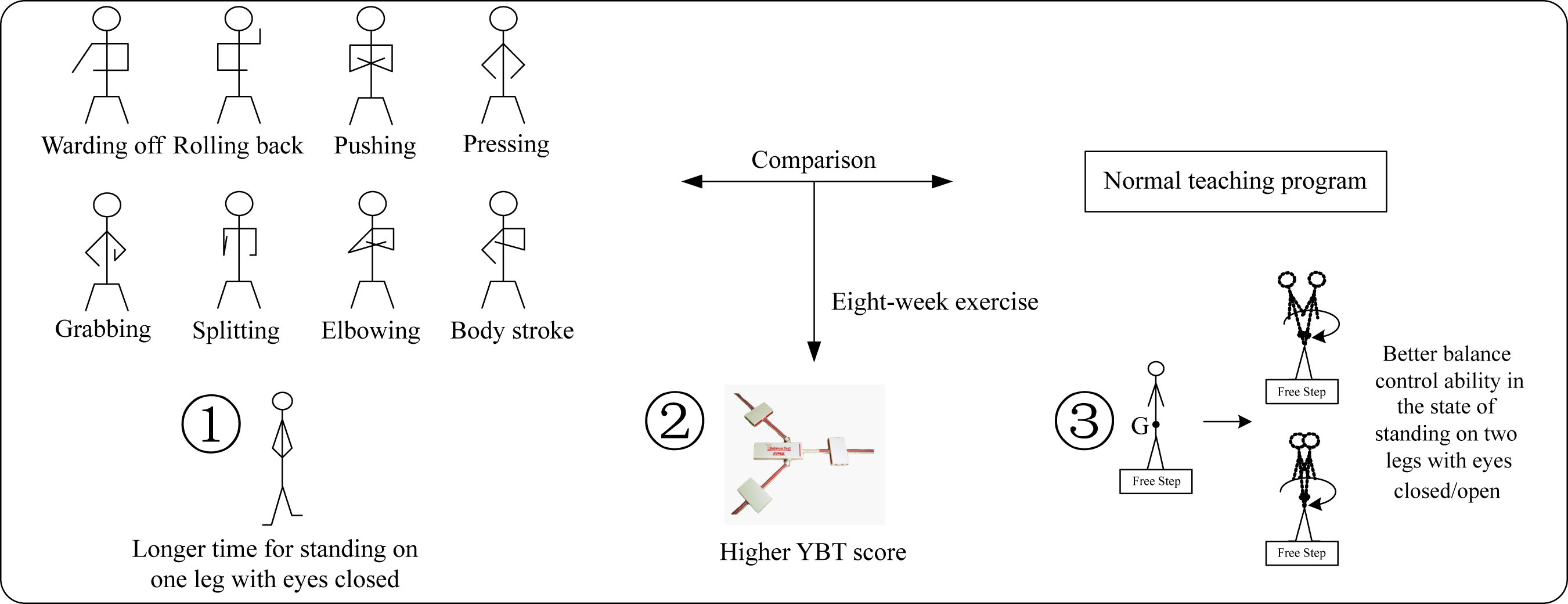 Open Access
Open Access
ARTICLE
Biomechanical Analysis of Tai Chi (Eight Methods and Five Steps) for Athletes’ Body Balance Control
College of Physical Education, Sichuan Agricultural University, Ya’an, 625014, China
* Corresponding Author: Yuanyuan Feng. Email:
Molecular & Cellular Biomechanics 2023, 20(2), 97-108. https://doi.org/10.32604/mcb.2023.045804
Received 08 September 2023; Accepted 23 November 2023; Issue published 28 December 2023
Abstract
Background: The increasing number of Tai Chi practitioners has led to extensive attention from researchers regarding the role of Tai Chi exercise. Numerous studies have been conducted through various experiments to examine the effects of Tai Chi on physical and mental improvement. Objective: This paper aims to investigate the effect of practicing Tai Chi (eight methods and five steps) on athletes’ body balance control ability from a biomechanical perspective. Methods: Twenty male athletes were randomly divided into two groups. They had no significant differences in age, height, weight, and training time. The Tai Chi group performed Tai Chi (eight methods and five steps) exercises for nine weeks. Practice sessions were scheduled for every Monday, Wednesday, and Friday, each lasting 50 min. The blank group did not perform any exercises. After nine weeks, the athletes in both groups underwent testing for the one-legged stance with eyes closed, Y-balance test (YBT) score, and plantar pressure. Results: After the experiment, the one-legged stance with eyes closed of the Tai Chi group was 151.36 ± 48.77 s. The scores of the left and right sides of the YBT were 101.84 ± 5.97 and 100.59 ± 5.66, which were significantly higher than 80.33 ± 31.52 s, 96.12 ± 7.33, and 97.64 ± 8.12 in the pre-experimental period. In the results of the plantar pressure test, when the athletes stood with both feet and eyes closed, the EA was 23.46 ± 6.86 mm2, Delta X was 7.64 ± 1.03 mm, and Delta Y was 5.88 ± 0.75 mm, which were significantly different from those in the blank group (55.64 ± 7.98 mm2, 12.21 ± 1.27 mm, and 8.97 ± 50.86 mm) (p < 0.05); when they stood with both feet and eyes open, the EA was 27.64 ± 6.73 mm2, and Delta X was 7.31 ± 0.56 mm, which were significantly different from those in the blank group (40.66 ± 5.84 mm2 and 9.87 ± 0.84 mm. Conclusion: Practicing Tai Chi (eight methods and five steps) can extend the duration of standing with eyes closed, improve YBT scores, and reduce EA, Delta X, and Delta Y values, thus enhancing athletes’ body balance control.Graphic Abstract

Keywords
Cite This Article
 Copyright © 2023 The Author(s). Published by Tech Science Press.
Copyright © 2023 The Author(s). Published by Tech Science Press.This work is licensed under a Creative Commons Attribution 4.0 International License , which permits unrestricted use, distribution, and reproduction in any medium, provided the original work is properly cited.


 View Full Text
View Full Text Download PDF
Download PDF Downloads
Downloads
 Citation Tools
Citation Tools